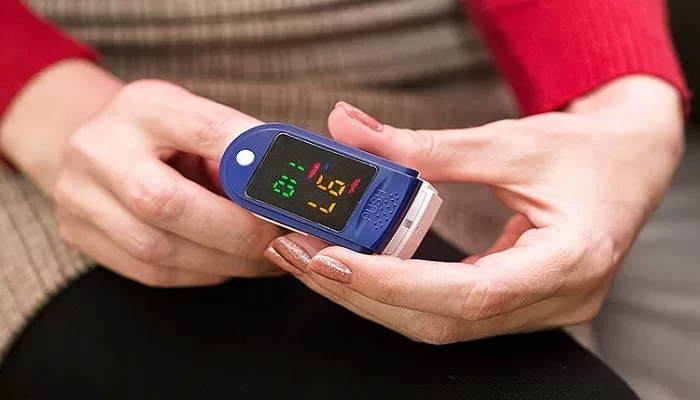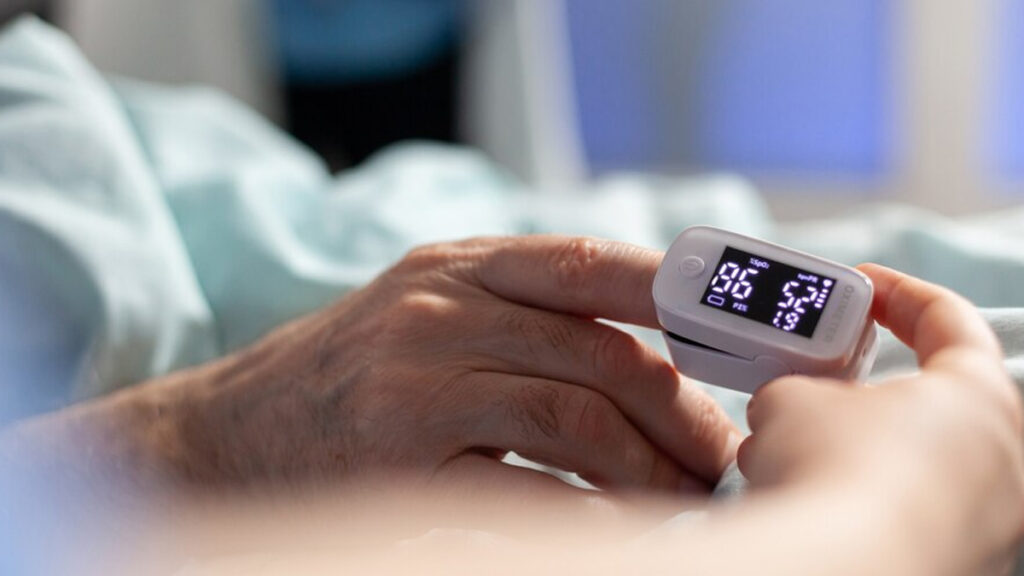You’re serious about fitness—and you know that tracking your blood oxygen saturation (SpO₂) can give you critical insights into your recovery, endurance, and overall wellness. In 2025, the market is flooded with smartwatches boasting SpO₂ sensors, but not all are created equal. To help you cut through the noise, this guide will:

- Show you why SpO₂ monitoring matters for athletes and weekend warriors alike
- Lay out the key factors you must consider—accuracy, battery life, comfort, and ecosystem
- Present a side-by-side comparison of the top 7 models
- Offer actionable tips to pick the right watch for your training goals
- Answer your most frequently asked questions
By the end, you’ll have clear, practical advice to choose the best SpO₂ smartwatch for your needs—no guessing required.
Why Blood Oxygen Monitoring Matters
- Early warning for overtraining and fatigue. Low SpO₂ readings during or after exercise can signal that your body is not recovering efficiently.
- Sleep insights. Continuous SpO₂ tracking helps you detect sleep apnea or nocturnal drops in oxygen that impair recovery.
- Altitude and endurance performance. If you train at elevation, SpO₂ monitoring lets you gauge acclimation and optimize training loads.
- Health safety net. In 2020, widespread use during the COVID-19 pandemic highlighted how wearable SpO₂ can alert you to respiratory issues before symptoms worsen (wired.com).
Pulse oximetry became the hospital standard in the 1970s—now you can carry that power on your wrist (healthline.com).
Key Comparison Factors
When evaluating SpO₂-enabled smartwatches, focus on these critical criteria:
- Sensor Accuracy & Validation
- Look for FDA-cleared or clinical-grade sensors (e.g., Masimo technology).
- Check independent lab tests or peer-reviewed studies.
- Battery Life
- Continuous SpO₂ mode can drain batteries quickly—aim for at least 24 hours of mixed usage.
- Comfort & Durability
- A secure, breathable strap ensures accurate readings and all-day wear.
- Water and dust resistance matter if you sweat hard or train outdoors.
- Software & Insights
- Does the companion app translate raw SpO₂ data into actionable coaching?
- Look for training load metrics, sleep coach features, and recovery guidance.
- Ecosystem & Compatibility
- Android vs. iOS support can restrict feature sets.
- Third-party app integration (Strava, TrainingPeaks) may be key for your setup.
- Price & Value
- High-end sensors often come with a premium.
- Entry-level models may sacrifice accuracy or battery for affordability.
Top 7 SpO₂ Smartwatches of 2025: At a Glance
| Model | Sensor Tech | Battery Life | Price (USD) | OS & Compat. | Special Features |
|---|---|---|---|---|---|
| Garmin Venu 3 (androidcentral.com) | Garmin Elevate v4.0 | Up to 14 days | $349 | Garmin OS; Android, iOS | Jet Lag Adviser, Body Battery, Sleep Coach |
| Garmin Forerunner 965 (tomsguide.com) | Garmin Elevate v4.0 | Up to 23 days | $599 | Garmin OS; Android, iOS | Multiband GPS, Acclimation Mode |
| Apple Watch Ultra 2 (techradar.com) | Apple SpO₂ (Masimo pending) | Up to 36 hrs | $799 | watchOS; iOS only | Fall detection, depth gauge, rugged build |
| Samsung Galaxy Watch 7 (the-independent.com) | Samsung Biowear | Up to 80 hrs | $329 | Wear OS; Android only | Rotating bezel, sleep apnea detection |
| Google Pixel Watch 3 (the-independent.com) | Fitbit SpO₂ monitor | Up to 24 hrs | $349 | Wear OS; Android, iOS | Fitbit Premium metrics, sleek design |
| OnePlus Watch 3 (theverge.com) | Oppo/Biowear hybrid | Up to 120 hrs | $249 | Wear OS; Android only | AI‐assisted health coaching, fast charging |
| Huawei Watch GT 4 (dnict.com) | Huawei TruSeen 5.0 | Up to 14 days | $299 | LiteOS; Android, iOS | Massive battery, 100+ workout modes |
Note: Prices are approximate and may vary by region or retailer.
Deep Dive: Model-by-Model Analysis
1. Garmin Venu 3
- Why it excels: Industry-leading SpO₂ accuracy with continuous readings every 5 minutes.
- Battery life: Up to 14 days in smartwatch mode—even with nightly SpO₂ tracking (androidcentral.com).
- Unique perks:
- Sleep Coach for personalized sleep optimization.
- Jet Lag Adviser gives tips when you cross time zones.
- Ideal for: Runners and triathletes who need robust multisport support and long battery.
2. Garmin Forerunner 965
- Why it excels: Pro training tools plus clinical-grade sensor validation.
- Battery life: Up to 23 days in low-power mode—perfect for ultramarathoners (tomsguide.com).
- Unique perks:
- Multiband GPS for pinpoint accuracy
- Acclimation Mode monitors your adaptation to heat and altitude
- Ideal for: Serious endurance athletes and adventurers.
3. Apple Watch Ultra 2
- Why it excels: Rugged design plus on-wrist ECG and accurate SpO₂ spot checks.
- Battery life: Up to 36 hours with heavy GPS/SpO₂ use (techradar.com).
- Unique perks:
- Depth Gauge for water sports
- Fall Detection with emergency calling
- Ideal for: iPhone users who want a do-it-all outdoor and fitness companion.
4. Samsung Galaxy Watch 7
- Why it excels: Smooth Wear OS interface with Samsung Biowear sensor suite.
- Battery life: ~80 hours with mixed usage (the-independent.com).
- Unique perks:
- Rotating bezel for easy navigation
- Sleep Apnea Detection integrated in Samsung Health
- Ideal for: Android aficionados who value style and everyday comfort.
5. Google Pixel Watch 3
- Why it excels: Fitbit’s health expertise meets Wear OS flexibility.
- Battery life: Up to 24 hours in normal use (the-independent.com).
- Unique perks:
- Fitbit Premium workout and wellness programs
- Sleek, circular design that fits all wrists
- Ideal for: Casual fitness fans who want guided workouts and wellness trends.
6. OnePlus Watch 3
- Why it excels: Exceptional battery and AI health coaching.
- Battery life: Up to 120 hours on a single charge (theverge.com).
- Unique perks:
- AI-powered health insights adjust based on your routine
- Fast charging—up to a week’s charge in 15 minutes
- Ideal for: Busy professionals who need minimal charging downtime.
7. Huawei Watch GT 4
- Why it excels: Best-in-class battery with solid SpO₂ monitoring.
- Battery life: Up to 14 days, even with daily tracking (dnict.com).
- Unique perks:
- 100+ workout modes for niche sports
- Bluetooth calling without your phone in hand
- Ideal for: Budget-minded athletes who don’t want to compromise on features.
Actionable Tips for Your Purchase
- Test sensor comfort. Try on watches in a store to see if the optical sensor sits well on your wrist.
- Consider your phone. iPhone owners unlock full Apple Watch potential; Android users get richest experience on Samsung, Garmin, or OnePlus.
- Factor in app ecosystem. If you’re invested in Strava, TrainingPeaks, or Fitbit Premium, pick a watch that syncs seamlessly.
- Plan for battery replacement. High-cadence SpO₂ tracking can shorten battery lifespan—factor in replacement costs if you train daily.
- Look for trials. Many brands offer 30-day returns—use that period to test SpO₂ accuracy during workouts and sleep.
Frequently Asked Questions
Q1: How accurate are smartwatch SpO₂ readings compared to medical devices?
Smartwatch sensors are typically within 2–4 percent of clinical pulse oximeters under ideal conditions (en.wikipedia.org). Variations can occur based on skin tone, motion artifact, and ambient light.
Q2: Does continuous SpO₂ monitoring significantly drain battery?
Yes—enabling 24/7 SpO₂ can cut battery life by 20–50 percent. Consider watches with at least 48 hours of real-world mixed usage capacity.
Q3: Can I rely on SpO₂ alerts for medical emergencies?
Wearables are not medical devices. Use them as early warning tools and consult a healthcare provider for any readings below 90 percent (verywellhealth.com).
Q4: Which SpO₂ watch is best for runners?
Garmin Forerunner 965 leads for ultrarunners, thanks to multiband GPS and best-in-class battery.
Q5: Do any watches adjust for altitude training?
Yes—the Garmin Forerunner 965 includes an Acclimation Mode to help you adapt to high elevations.
Conclusion
Choosing the right SpO₂-enabled smartwatch in 2025 boils down to matching accuracy, battery life, ecosystem, and budget to your personal training profile.
- For hardcore athletes: Garmin Forerunner 965 or Venu 3
- For iPhone users: Apple Watch Ultra 2
- For style & comfort: Samsung Galaxy Watch 7 or Pixel Watch 3
- For long battery & budget: OnePlus Watch 3 or Huawei Watch GT 4
Armed with this comparison, you can shop confidently—knowing that your new smartwatch will help you train smarter, recover better, and keep your health in check throughout every mile, rep, and sleep cycle.
Go ahead—upgrade your wrist, elevate your fitness, and breathe easier.

